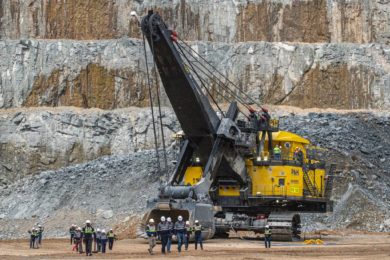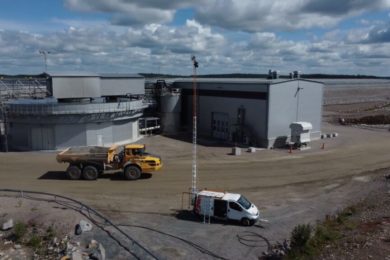Haver Australia is offering clients a refurbishment service for Haver & Tyler vibrating screens, which is carried out by a Haver & Tyler technician that can reduce down time, while cutting back on capital cost expenditure. Haver Australia will be conducting refurbishments by only using OEM parts that have a 12 month guarantee.
“By using OEM parts we can guarantee that upgrades are performed to Haver & Tyler standards and that the parts are compatible with existing Haver & Tyler machines. Our engineering team is constantly working on ensuring improvements to the design of spare parts are completed in line with the clients’ requirements and changing conditions of the market,” Haver Australia Technical Manager Dominik Vennewald says.
The company states that it is to the clients’ benefit to use OEM parts to improve screening performance. “As with any machine maintenance, vibrating screen maintenance usually follows a formal plan of inspecting, servicing, and replacing components at appropriate intervals,” Vennewald says. “But, a vibrating screen and its components can be subject to extreme wear and tear, especially when handling coarse, abrasive materials like copper and iron ores. A screen is usually located in rugged environments, whether indoors or outdoors, and it often operates around-the-clock, which also increases the need for regular maintenance.”
“If maintenance is not carried out, this could lead to serious problems, including reduced screening performance, poor-quality product, and even unexpected process breakdown, all resulting in downtime,” Vennewald says.
“When one or more parts, such as crossbeams or spring brackets, aren’t properly lined-up, the machine box can become misaligned, resulting in higher stress levels that can lead to cracks in the equipment’s structural parts. In this case, the vibrating screen can come to a sudden stop that halts production. An effective way to overcome these problems and to extend your vibrating screen’s lifetime is to send the screen out to be completely refurbished by a company – like Haver Australia, that specialises in these services.”
The first step in the Haver Refurbishment process involves a preliminary evaluation, which includes a feasibility analysis that is conducted by a Haver Australia Technician while the equipment is still on site. Step two will require the machine to be completely dismantled for evaluation purposes. A technical report which includes a list of parts that could be reused, refurbished or changed will be supplied to the client. The report, which includes a technical and commercial proposal of work will then be sent to the client for approval in order to proceed with the refurbishing process.
All refurbishment work will be carried out by Haver & Tyler trained technicians, and can typically be completed faster, in comparison to the time it would take with workers on site, hence reducing total downtime.
A Haver Australia technician, will then execute a vibration analysis after the screen is refurbished. This step will guarantee an optimum screening performance before the equipment is delivered back to client’s site for installation. “Opting to send your vibrating screen out for refurbishment provides several benefits, in comparison to trying to maintain the machine on-site,” Vennewald says. “Refurbishing is safer for your workers, as it allows for higher-quality repairs, it is less time-consuming, and it enables clients to customise the vibrating screen to suit their requirements,” he adds. “Not only will refurbishing greatly extend the service lifetime of the vibrating screen, the extended lifetime of the machine will delay machine replacement and additional CAPEX.”









